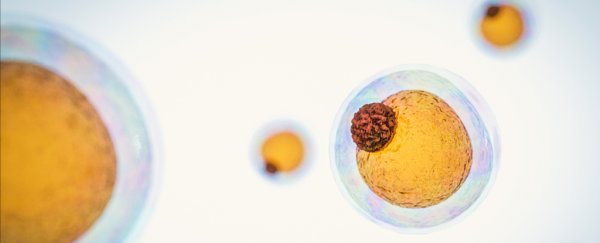Obesity is a disease where people accumulate more and more fat. When they reach a certain point, their fat stops working and they develop disease, such as type 2 diabetes. But not all fat is bad.
The fat that accumulates in obesity is called white fat, but a second form of fat (brown fat) could actually be used to treat obesity.
Brown fat has evolved to turn fuel into heat. In small animals, like mice and voles, brown fat makes heat that helps them survive, even in freezing temperatures.
Brown fat can burn a stupendous amount of energy. When fully activated, just 100 grams of brown fat can burn 3,400 calories a day – nearly double most people's daily food intake and more than enough to rapidly combat obesity.
Even better, for reasons we don't yet understand, when brown fat burns fuel, the body doesn't sense it, meaning the person doesn't eat more food to stay at the same weight.
While babies have a lot of brown fat, most adults have very little and, worse still, it is almost always inactive. However, recent studies have shown we can develop more brown fat, making it an attractive approach to treat obesity.
How to make more brown fat
Unfortunately, the only reliable way to both increase the amount and activity of brown fat is to mimic a harsh winter – one without central heating and warm clothes.
Placing people in the cold tells their body they need more heat and their nervous system tells brown fat to both turn on and become larger. But putting people in a cold room for days is impractical, not to mention really unpleasant.
One option is to mimic the nervous signals that turn on brown fat using drugs. But the drugs that turn on brown fat also increase blood pressure and heart rate. This has the side effect of causing heart attacks, particularly in obese people, whom brown fat is supposed to treat.
The final problem with activating brown fat is that even if we could make every white fat cell in the body brown, it would not necessarily help. Brown fat needs an excellent blood supply to provide all those calories it can burn. It also needs nerves to contact the brown fat cells to switch them on.
BMP8b: a potentially game-changing molecule
A few years ago, we identified a molecule in mice called BMP8b. BMP8b is found at much higher levels in brown fat than in white fat, and the amount of it increased when we put mice in the cold.
Importantly, humans also have BMP8b. We discovered that deleting BMP8b in mice prevented brown fat from functioning. Because BMP8b is found in the blood, it could be used as a drug to increase the amount of brown fat in humans as well as its activity.
Before testing BMP8b in humans, we wanted to investigate the effect of boosting BMP8b in mice – that is, would it increase brown fat function? We genetically engineered the white fat of mice to have as much BMP8b as the brown fat of normal mice.
We found that increasing BMP8b levels made white fat browner and increased its activity. BMP8b does this by making mice more sensitive to the signals from nerves that activate brown fat. What was more unexpected was that BMP8b also increased the number of blood vessels and the number of nerves in white and brown fat.
This combination of factors was really exciting as BMP8b could make humans have more brown fat that has a good fuel supply. Increasing the number of nerves in brown fat would also mean any signals from the brain to activate brown fat would be amplified.
Finally, because BMP8b makes brown fat more sensitive to signals from the nerves that activate brown fat, it may be possible to use drugs that mimic these signals at lower doses – even below the levels that cause heart attacks.
While our results are promising, more work will be needed to test if BMP8b can chang brown fat function in humans.
Samuel Virtue, Senior Research Associate, University of Cambridge; Antonio Vidal-Puig, Professor of Molecular Nutrition and Metabolism, University of Cambridge, and Vanessa Pellegrinelli, Researcher, University of Cambridge.
This article is republished from The Conversation under a Creative Commons license. Read the original article.
